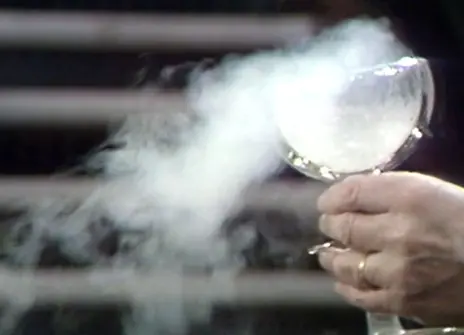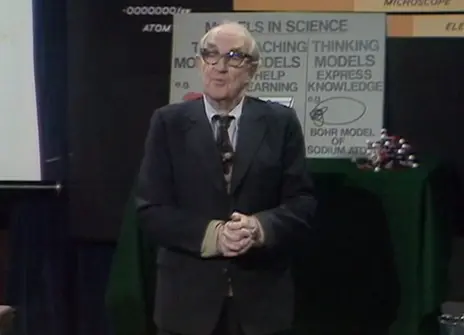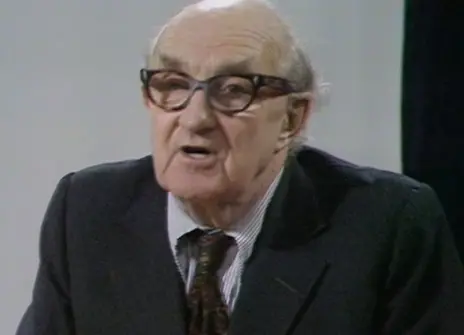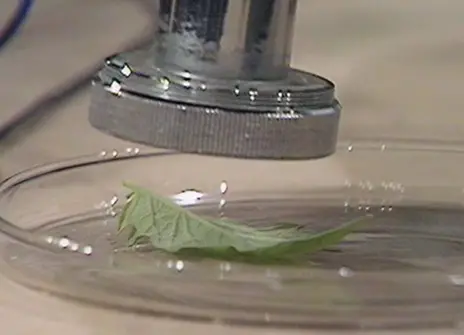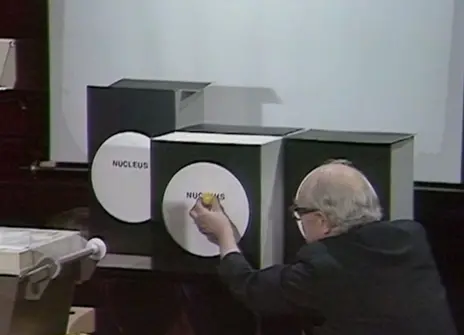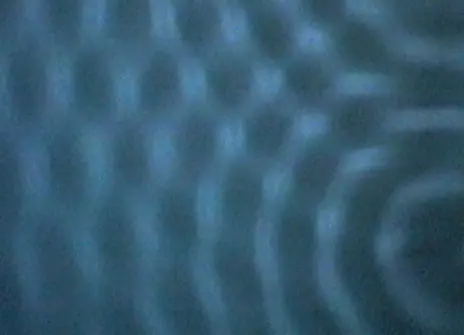Lecture 3 – Electrified atoms
From the 1979 lecture programme:
Ions are atoms or molecules that have gained an electric charge by gaining or losing a spare negative electron.
Electric fields can drive ions across, positive ions one way, negative ions the opposite way. An electric field is a region of force from a positive charge to a negative charge, ready to push or pull an ion or any other charged particle. See some patterns of electric fields made with high-voltage machines.
A candle flame contains a swarm of ions, + and -. See the flame driven across by the field between charged plates. See the driven ions forming a tiny measured electric current. Solutions of some salts in water contain ions that can be driven by an electric field. The ions travel across and arrive to provide useful chemical products such as deposits of metal, or bubbles of oxygen and hydrogen.
Electrons are 'chips' torn off the surface of an atom, or boiled off a white-hot wire. Experiments have shown they are all alike, each carrying the same negative charge. A few hundred volts can accelerate them to vast speeds. Then a stream of them responds incredibly quickly and sensitively to deflecting electric fields. That is used in a cathode ray oscilloscope (and in television picture-tubes with magnetic fields to deflect the stream). That will be shown with real electron streams; also with a model of electrified water drops.
A rectifier is a valve that lets electric current through one way but not the opposite way. Watch what it can do with alternating current for a toy train, shown by an oscilloscope as an electronic graph plotter. Returning to ions in gases see how a spark is formed. See the colours of light that atoms can give out as they return from an ionized state or just an excited state. How could such observations possibly tell us of an expanding Universe? We can make a simple atom model of a large positive ion and one or more electrons.
About the 1979 CHRISTMAS LECTURES
From the 1979 lecture programme:
We build our scientific knowledge by doing experiments, by asking questions of Nature and sorting out the answers that Nature gives us. The sorting-out often involves reasoning and imagination; but without trying experiments to see what does happen we should just be guessing in the dark.
The earliest scientists, who helped our ancestors long ago to make a calendar, to navigate, and to measure and build, gathered some knowledge by watching what does happen. Nature was offering experimental knowledge all round them; and they observed and extracted general knowledge and used it. That was knowledge of man-sized things: a hand mirror to reflect rays of sunlight; the star patterns seen at night reduced to a sketch; a seesaw to balance children —leading to weighing machines; a bridge across a stream, leading to knowledge of forces; measurements for a building only a few men high; a survey of a mountain that men could climb.
Such gathering and use of scientific knowledge dates from thousands of years ago, perhaps even a million or so. That was experimental knowledge, though it was sometimes mixed with guessing or even wild imagining. But when men tried to describe the fire of the stars far out of reach, or to imagine outrageously small moving atoms in all matter, they were indeed guessing in the dark about things far above or below the scale of man-sized things.
Some early scientists did make interesting guesses about atoms, yet these were only guesses. These were clever philosophy if you like, but there were no experiments to support them.
Except for clever suggestions, our knowledge of atoms is very young compared with our older scientific knowledge. Some of it is a few centuries old but much of it is only one century old at most. There are two reasons for that late development. First: since atoms are (as we now know) far too small to be seen, all our experimental gathering of knowledge has to be indirect. Although we now know a great deal about atoms, and about the still smaller parts of atoms, we still have to describe them by imaginative pictures which we call models.
Second: even to build such knowledge indirectly, new apparatus had to be developed, such as vacuum pumps and electronic supplies for high voltage. The aid of a vast new technology was needed.
Nowadays when one learns what has been discovered about atoms one has to learn by hearsay, one has to accept the indirect methods and swallow the picturing by imaginative models. Then a keen listener must long for some experimental support or illustrations. That is what these lectures will offer in their 'circus of experiments'. The circus cannot cover all our new knowledge of atoms but it will, we trust, give visitors a feeling of friendly first-hand acquaintance, a contribution of confidence and understanding as well as a delight in seeing experiments.

